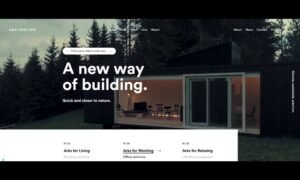A well-structured online presence isn’t just about aesthetics—it’s about being found. If your platform isn’t built for discoverability, it risks being buried under countless other pages. This is why I focus on more than just visual appeal. A strong foundation ensures that users and ranking systems alike can easily navigate and engage with the content.
Without proper optimization, even the most visually appealing pages may remain unseen. By integrating the right strategies from the beginning, businesses and individuals can improve accessibility while enhancing user experience.
What You’ll Learn in This Guide:
How structure influences online visibility
Key principles that improve exposure
Common design pitfalls that reduce engagement
Practical steps to enhance accessibility
Let’s dive in!
Why Structure and Optimization Matter
The way a platform is designed affects both engagement and discoverability. If visitors struggle to navigate, ranking systems will as well. If pages load slowly, people leave, which signals poor performance.
A well-structured page does more than look good—it directly impacts how easily it can be found.
How Layout Affects Online Presence
Logical Organization – A clear structure helps both users and ranking tools find information efficiently.
Adaptability Matters – A flexible interface ensures accessibility across all screen sizes.
Performance Impacts Engagement – Sluggish load times drive users away, negatively affecting rankings.
Navigation Should Be Simple – A seamless experience keeps visitors exploring longer.
Strategic Content Placement – Information should be positioned for maximum engagement.
A confusing layout doesn’t just frustrate users—it actively works against efforts to improve visibility.
Essential Design Elements for Better Performance
1. Mobile Optimization: Adapting for All Devices
With most users browsing on smaller screens, flexibility isn’t optional. Search platforms prioritize mobile-ready experiences, so ensuring smooth functionality across devices is critical.
Implement adaptive layouts that adjust automatically.
Prioritize quick load times by removing unnecessary elements.
Ensure intuitive navigation with accessible buttons and menus.
Want to check if your platform meets modern standards? Here’s a guide on Mobile-First Indexing.
2. Page Speed: Faster is Always Better

No one enjoys waiting. If a page takes more than three seconds to load, most visitors leave.
Optimize images – Reduce file sizes without compromising quality.
Enable caching – Store frequently accessed elements for quicker browsing.
Streamline code – Remove unnecessary spaces and scripts.
A slow-loading page isn’t just inconvenient—it can significantly reduce visibility.
3. Clear Navigation & Logical Structure
If users struggle to find what they need, they won’t stick around. The same applies to ranking systems that analyze structure for efficiency.
Keep URLs short and descriptive (e.g., example.com/optimization-basics instead of example.com/page123).
Use a logical hierarchy—major sections should lead naturally to relevant topics.
Internal links connect related pages and improve overall flow.
For a deeper dive into structuring links effectively, this guide on link-building can help.
4. On-Page Elements: Small Details, Big Impact
Fine-tuning specific details can greatly improve discoverability.
Titles & descriptions – These should be clear and engaging.
Headings – Organize content with well-structured subheadings.
Image labels – Use appropriate descriptions to ensure proper indexing.
For a full breakdown of page-level optimization, check out this resource.
5. Content Placement: Quality Over Quantity
Even the best design needs engaging material to remain effective. Successful platforms include:
Useful insights – Content that directly answers visitor questions.
Clear formatting – Bulleted lists, short paragraphs, and concise explanations.
Naturally placed keywords – Avoid forced repetition; instead, use variations and synonyms.
Overloading pages with keywords does more harm than good. Keeping the language natural improves both readability and search performance.
Common Mistakes That Reduce Visibility
Large, uncompressed images – These slow down performance.
Overuse of JavaScript – Too many scripts can make content harder to process.
Neglecting internal links – A weak linking structure causes important pages to be overlooked.
Poor content organization – Information should be easy to find and digest.
Ignoring local optimization – If your business serves a specific area, location-based adjustments are essential.
For more on mistakes to avoid, this guide breaks it down.
A Balanced Approach Wins
Optimization isn’t something I add at the end—it’s woven into the foundation. A well-structured platform ensures that visitors can find, engage with, and return to it—because ultimately, that’s the goal.
So, if your online presence isn’t attracting attention, ask yourself: Is it built to be discovered or just to look good? Want a practical checklist to guide your efforts? Check it out here.


